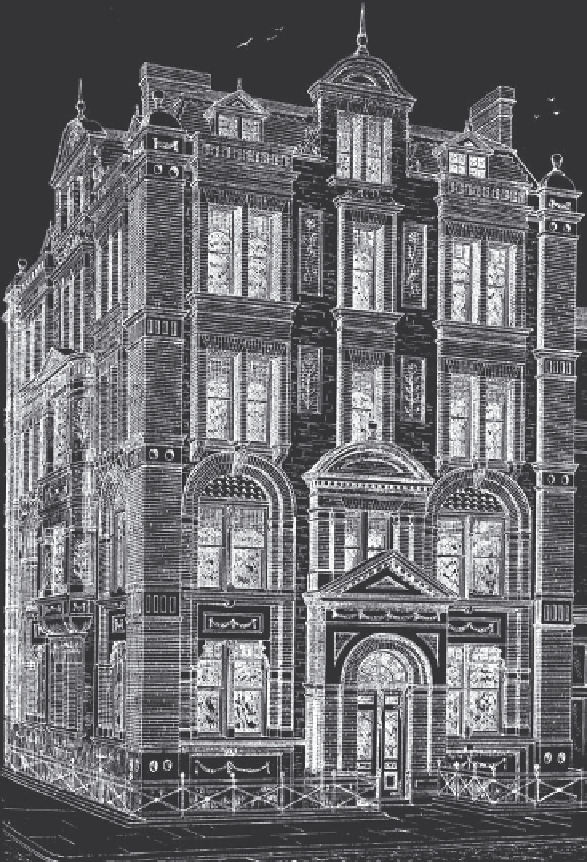Agriculture Reference
In-Depth Information
Where
in situ
carving work was to be undertaken as part of an overall
enriched detailing Walker (1885, 83) explains:
It is the work of the bricklayer to cut and form all kinds of mouldings, dentils,
entasis, columns, flutings and such-like members in gauged work, leaving the
more intricate, such as design and foliage, to be executed by the carver.
By the second half of the nineteenth century city trade carvers, who could work
in brick, stone or wood, were commonly employed by large companies like
John McCullock of Kennington, London, rather than be self-employed. The trade
carver Mr Heam, who carved all the decorative gauged work on the block of
offices erected at the corner of Chancery Lane and Southampton Buildings,
London, in 1879 was one such person (Fig. 139).
Figure 139
Drawing from 'The
Architect', of the
offices at the corner
of Chancery Lane,
London, displaying
carving skills on gauged
work panels by
Mr Heam, 1879.

